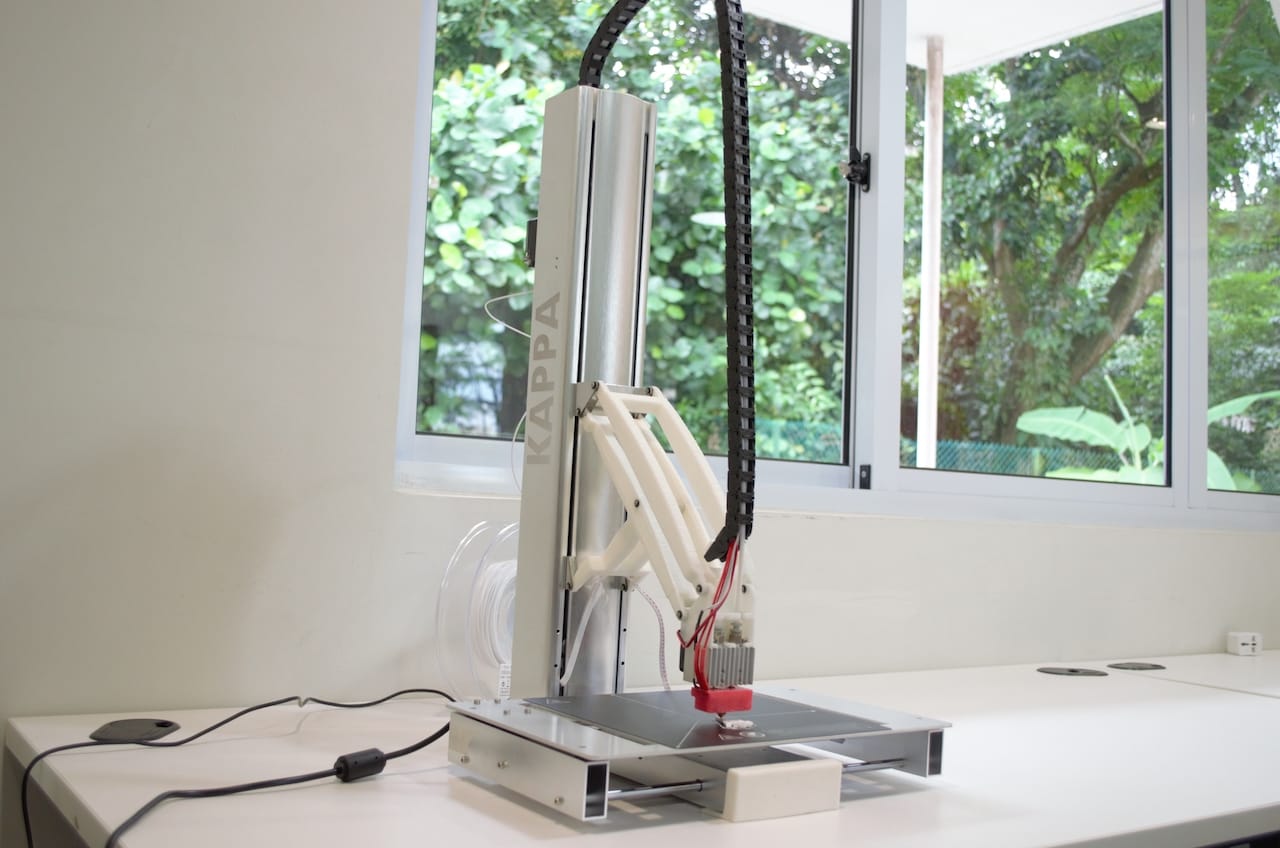
A new 3D printer offering uses a very unusual motion system.
The Kappa, made by Singapore startup Ionic3DP, uses a Scott-Russell system, rather than the frequently seen cartesian or delta-style motion systems.
This animation shows how it works. It’s a method of providing “straight line” motion with a very simple arrangement of components. Ionic3DP has leveraged this principle to create a desktop 3D printer that is somewhat simplified mechanically as compared to typical alternatives.

Shabbir Sultan Shamsuddin, CEO & Co-Founder of Ionic3DP explained the advantages of this approach and the Ionic3DP Kappa:
- Large Build Volume for a Small Footprint area – the design occupies less space compared to a typical Cartesian or Delta 3D printer of similar build volume (200mm3).
- Compact and Convenient – It also weighs just 6 kilos which makes it really easy to move around (you can carry it with just one hand).
- Unibody design – The design allows for all components to housed onto and within frame. This makes the movable parts lighter which reduces the stress on the motors. The tower also acts as a heat sink which may allow the printer to run for a longer duration.
- Simplistic Assembly – The modular design keeps assembly to a minimum and is completed in just a few minutes. The main frame comes completely assembled and you’re ready to print after fitting just 6 screws.
- Detachable bed – The detachable heated bed allows easy removal of prints and the use of magnetic holders keeps the bed positioned perfectly, eliminating the need to re-calibrate the machine after each use, so that your 3D printing experience is uncomplicated.
While most desktop 3D printers use a cartesian system, some use a delta-robot style approach. The delta approach permits very tall build volumes, and its lightweight structure can permit more rapid movements. I wondered if the Scott-Russell system could do the same, but Shamsuddin explained that the system can run only up to 70mm/second, a typical 3D print speed.
The Kappa has pretty standard operating specifications, aside from the unusual mechanical system. It has a build volume of 200 x 200 x 200mm, able to handle many standard objects. The build plate can heat up to 80C, making it possible to print PETG, ABS and several other materials on this system, although the open design exposes prints to ambient air conditions. Layer resolution can be as small as 0.05mm.
Connectivity is provided through a standard USB port, as well as an SD card. Software to drive the Kappa is open source, such as Cura, although you can also use third party solutions such as Simplify3D. Ionic3DP has integrated any required motion system changes directly into the Kappa’s firmware, so you simply use your slicing software in the usual manner.
They intend on launching the product through a Kickstarter campaign this month, so we don’t yet know the pricing of the unit. However, a major concern of any product from a startup is the viability of the project.
Typically startups stumble on the manufacturing aspects of the project, where they underestimate the challenges of producing a great many units.
There are two positive signs on this project. First, they have limited the production run to a modest 1,500 units, which, as it is known, should make manufacturing planning far easier.
Secondly, Shamsuddin explained their strategy:
Our manufacturing partner located in Zhengzhou. We partnered with them early on (July 2016) and have been developing Kappa in collaboration with them from the start. This has optimized processes and identified manufacturing complexities early on, enabling us to tackle and solve them early on. Our prototypes were developed keeping manufacturing in mind, using the same tools and equipment required for production. We have already completed two pre-production runs, the unit in the picture is a result of latest version.
Will the unusual motion system catch on? We will soon see.
Via Kickstarter and Ionic3DP

